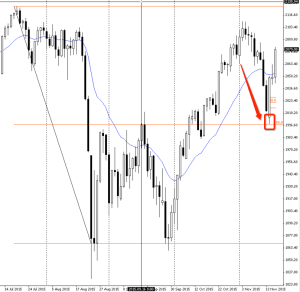I have written about investments before. But it is worth going over again.
The problem is the medium-term investment area; where most people invest. The near-term to 25-year investment timeframe.
The investment area that works, if done correctly, is following Warren Buffet’s example of investing in undervalued stocks and holding for more than 30 years. Indeed he doesn’t sell.
The other area that works, but is challenging to master, is the very short-term stuff. I cover this every week on this blog.
Okay, we have only two time-frames that we can invest with confidence: the very long and the very short.
Why does the middle investment area not work? Because of market volatility and the probability of a market crash within that time frame.
A market crash for the Warren Buffet model, the very long-term investors, is just a blip in the big scheme of things. Not a problem. In the Buffet model, we go through many crashes and use them as opportunities to add more stocks.
A market crash for the day traders and daily chart readers (like myself) is not usually an issue because the signals of a crash will show on the day and get out stops are very tight for these type of investors. Actually, for these guys, if they’re right, a crash is a big payday. They’re taking it all from the mutual funds.
For the Warren Buffet followers among us, we need excellent fundamental information which we review annually. This information we’ll cover in another blog.
On the other extreme, the short-term investors, day trading and daily chart reading, is not for everyone.
So that leaves us back with what to do about the middle timeframe investing problem.
If we have to be a middle term investor, then avoid the traditional, heavily biased towards stocks, mutual funds.
Observe where the mutual fund invests. Few funds balance investments between cash, stocks, bonds and commodities. Funds that do this, and not being more than 25% invested in stocks, are incredibly steady funds and good medium-term investments.
If we do have to go the mutual route, then costs are a significant factor. For every 1% that we pay a mutual fund will result in 20% of the fund managers over the medium time frame. Look for a cost of around 0.5%, no more. Same goes for pension funds.
The majority of mutual funds, however, invest more heavily in stocks and most don’t beat the index. These mutual funds are in the danger zone. When a stock crash happens the fund profit, and much of the capital is wiped out. Allow several years to get back to neutral. Not a lot of fun.
So, if we have to invest in the middle term investments then look for: a fund (mutual and pension) that has low fund costs; and an investment portfolio that balances bonds, cash, commodities and stocks – and is unusually light on stocks.


















